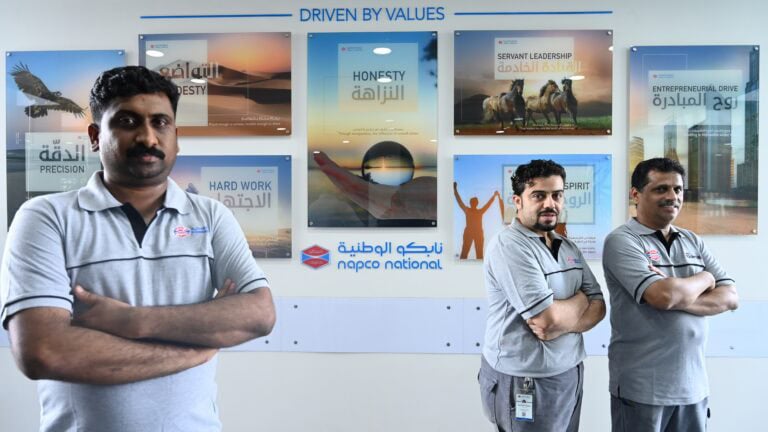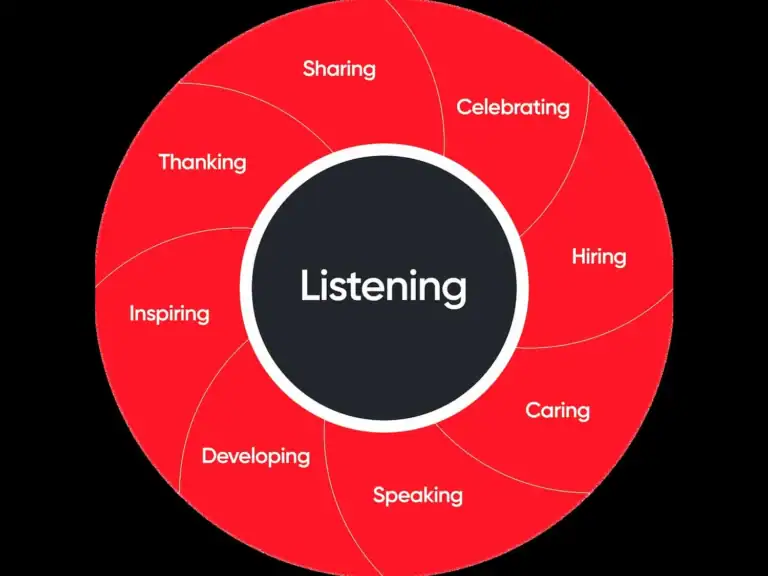7 Ways to Ease Workplace Anxiety in MENA for Mental Health Awareness


Jana Saab
May is Mental Health Awareness Month, and it’s an excellent opportunity for organizations to prioritize mental health in the workplace. This year’s theme is Anxiety, and it’s essential to raise awareness about the impact anxiety can have on employee well-being. Many employees may struggle with anxiety, which can affect their productivity, engagement, and overall work satisfaction. By creating a supportive workplace environment, employers can help reduce stigma and promote positive mental health for their employees. Here are seven Mental Health Awareness Month activities for the workplace that can help raise awareness about anxiety and support employee mental health.
1- Host a Mental Health Workshop or Seminar
One way to promote mental health awareness is by hosting a mental health workshop or seminar for employees. This can be a valuable opportunity to provide education about anxiety, its symptoms, and how to manage it. By offering resources and tools to manage anxiety, employees can feel empowered to take control of their mental health.
2- Encourage Open Communication
Creating a supportive workplace environment means encouraging open communication. Employers can promote mental health awareness by offering regular check-ins with employees and creating a safe space for them to share their concerns. Managers can offer support and resources, such as Employee Assistance Programs (EAPs), to employees who may be struggling with anxiety.
3- Promote Healthy Habits
Healthy habits can play a significant role in managing anxiety. Employers can promote healthy habits by offering wellness programs such as yoga, meditation, or exercise classes. Encouraging healthy eating habits, offering healthy snacks, and providing opportunities for employees to take breaks can also help promote positive mental health in the workplace.
4- Create a Quiet Room
Sometimes, employees may need a quiet space to decompress and manage anxiety. Employers can create a designated quiet room where employees can take a break and recharge. The quiet room can be a relaxing space where employees can take a few moments to focus on their mental health and well-being.
5- Offer Mental Health Days
Employers can show their commitment to employee mental health by offering mental health days. Mental health days can be used as a way for employees to take a break when they need it most. This can help employees’ recharge and manage their anxiety more effectively.
6- Recognize Mental Health Awareness Month
Employers can recognize Mental Health Awareness Month by promoting awareness and participating in activities that promote positive mental health. This can include sharing resources, hosting events, and promoting the official hashtags #MentalHealthAwarenessMonth and #ToHelpMyAnxiety on social media.
7- Encourage Support Networks
Creating support networks can be an excellent way for employees to connect with others who may be experiencing similar mental health challenges. Employers can encourage the formation of support groups or offer resources for employees to connect with others. This can help reduce isolation and promote positive mental health in the workplace.
Prioritizing mental health in the workplace is crucial, and Mental Health Awareness Month provides a valuable opportunity to address anxiety and support employees’ well-being. By implementing various strategies, organizations in the MENA region can create a supportive environment that fosters positive mental health. Hosting mental health workshops or seminars can educate employees about anxiety and equip them with tools to manage it effectively. Encouraging open communication and providing regular check-ins allows employees to share their concerns and receive support when needed. Promoting healthy habits, such as wellness programs and healthy eating options, contributes to overall well-being and anxiety management. Creating a designated quiet room offers employees a space to recharge and focus on their mental health. Offering mental health days demonstrates the organization’s commitment to employee well-being and helps individuals manage their anxiety more effectively. Recognizing Mental Health Awareness Month through various activities and social media engagement raises awareness and reduces stigma. Lastly, encouraging support networks and providing resources for employees to connect with others experiencing similar challenges helps combat isolation and promotes positive mental health in the workplace. By implementing these seven strategies, organizations in the MENA region can ease workplace anxiety and foster a mentally healthy and supportive work environment for their employees.
Take action now to prioritize mental health in your workplace and create a supportive environment that values the well-being of your employees.

What Makes Napco a Great Place To Work®? It Starts with Family Spirit and Ends with Impact
What Makes Napco a Great Place To Work®? It Starts with Family Spirit and Ends with Impact About Napco National Napco National has been part of the Saudi industrial landscape since 1956,

9 High-Trust Leadership Behaviors That Build Great Workplaces
Caring, Celebrating, Developing, Employee Experience, Hiring, High-trust leadership, Inspiring, Leadership & Management, Listening, Managerial Communication, Sharing, Speaking, Thanking Every employee should take these behaviors to heart whether or not they are people leaders. I often get asked

The Evolution of Workplace Culture: Why It Matters More Than Ever in 2025
One universal workplace experience is the emotional imprint left by an organization—its energy, trust, and sense of belonging. Although experts may agree on what constitutes

How Purunity Embeds Goodness into Work and Culture
People go where there is pride in the work they do. At Purunity, this sense of pride stems from our core mission: driving innovative and

Powerful Strategies to Cultivate DEI in Omani Workplaces
DEI is not only a buzzword! Developing a diverse, equitable, and inclusive work environment shows that leaders care about their employees, appreciate, and respect their

4 Strategies to Promote Resilience in UAE Workplaces
Cultivating resilience in the workplace is the key to empowering employees and boosting their confidence. It is important for both employees and their leaders. Resilience
